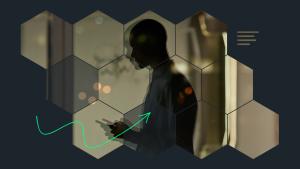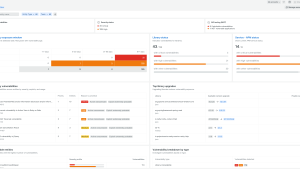As threats evolve and become more sophisticated, so too must our methods for detecting and mitigating them. Enter the application vulnerability testing and assessment process—a comprehensive approach that dives deep into the intricacies of your applications, shining a light on potential weaknesses and reinforcing them against future threats. In this blog, we'll unpack the process step by step, providing insights into how you can bolster your applications' defenses and navigate the digital landscape with greater peace of mind.
How to test your application for vulnerabilities
Application vulnerability testing isn't just another box to tick—it's a holistic endeavor to keep our applications resilient. Here's a glance at what it encompasses:
- Initial exploration: Grasp the app's functionalities, design, and security priorities.
- Strategizing the test: Sketch a robust plan detailing the testing's reach, methodologies in play, and necessary resources.
- Active testing: Employ techniques like static, dynamic, and interactive application security testing (IAST) to uncover vulnerabilities.
- Diving deep into vulnerabilities: Compile and assess findings in a comprehensive report, detailing each vulnerability's character, impact, and rectification suggestions.
- Addressing the gaps: Act on identified vulnerabilities.
- Double-checking: Re-test to ensure solutions are effective and haven't introduced fresh concerns.
- Staying alert: Embrace ongoing monitoring to stay ahead of vulnerabilities as your application grows.

Navigating challenges in vulnerability testing
Every crucial endeavor has its set of challenges, and vulnerability testing is no exception:
- Modern app complexity: Today's apps are intricate webs of connections, making vulnerability spotting a task. But with the right strategy and guidance (and maybe a splash of digital observability magic), you can identify those hard-to-spot vulnerabilities. Work with visualization tools to map out the app terrain, making it easier to spot potential trip-ups.
- Ever-shifting threats: With new vulnerabilities cropping up daily, staying updated is imperative. Keep an ear to the ground with threat intelligence channels, and foster a culture of continuous learning.
- Talent crunch: The cybersecurity domain faces a shortage of seasoned professionals. But even while the talent search continues, it's all about harnessing the power of the team you have. Invest in training, encourage knowledge-sharing sessions, and remember: Every member brings a unique strength to the table. With the right motivation and resources, your team can outrun any challenge.
- Tool limitations: Not every testing tool covers the full spectrum of threats, so it’s critical to diversify your toolkit. Pair automated solutions with manual checks, and always be on the lookout for the next game-changing tool. Regular reviews, audits, and updates ensure that you're always sporting the best gear.
Charting a path forward
As we wrap up our exploration into the vast landscape of application vulnerability testing, one thing becomes abundantly clear: staying agile and informed is the key. Embracing tools and techniques, like the prowess of New Relic IAST, allows us to stay a step ahead in this ever-evolving digital realm. However, it's not just about the tools; it’s also about mindset. By fostering a culture of continuous learning, adaptation, and collaboration, we don't just weather the storm of potential threats; we chart our course through it, ensuring our applications aren't just resilient but thrive in the face of challenges. After all, in today's digital age, preparedness isn't a luxury—it's a necessity. So, whether you're a seasoned pro or just embarking on your security journey, remember that the path to robust application defense is paved with knowledge, vigilance, and the right tech allies. Here's to safer, stronger apps for us all!
Application security testing FAQ
How does vulnerability testing vary from penetration testing?
While both are pillars of a robust cybersecurity strategy, vulnerability testing uses automated scans to detect system gaps. Penetration testing, conversely, simulates an attack to gauge a system's defenses.
What's a "zero-day" vulnerability?
These are software vulnerabilities unknown to orgs (like software vendors) who should be taking action. Until addressed, these vulnerabilities remain open for exploitation.
How often should we delve into vulnerability testing?
The answer varies based on your app's intricacies, the nature of data, and specific regulations. A good rule of thumb is to test with every new code deployment and as part of routine security checkups.
Does vulnerability testing ensure my app's invincibility?
Absolute security is elusive. While vulnerability testing bolsters your app's defenses, the evolving nature of threats means there's always room for improvement.
What's AI and machine learning's play in vulnerability testing?
They're game-changers! AI and machine learning amplify vulnerability testing by automating threat detection, risk ranking, and offering solution paths. By learning from past patterns and adjusting to novel threats, these tools usher in a more proactive and fortified testing process.
Next steps
Learn more about New Relic IAST.
Sign up for a free account today to take advantage of IAST and the 30+ other capabilities of the New Relic platform. Your free account offers 100 GB/month of data ingest, one full-platform user who can use all of our tools, and unlimited basic users who can view your data and insights.
The views expressed on this blog are those of the author and do not necessarily reflect the views of New Relic. Any solutions offered by the author are environment-specific and not part of the commercial solutions or support offered by New Relic. Please join us exclusively at the Explorers Hub (discuss.newrelic.com) for questions and support related to this blog post. This blog may contain links to content on third-party sites. By providing such links, New Relic does not adopt, guarantee, approve or endorse the information, views or products available on such sites.



